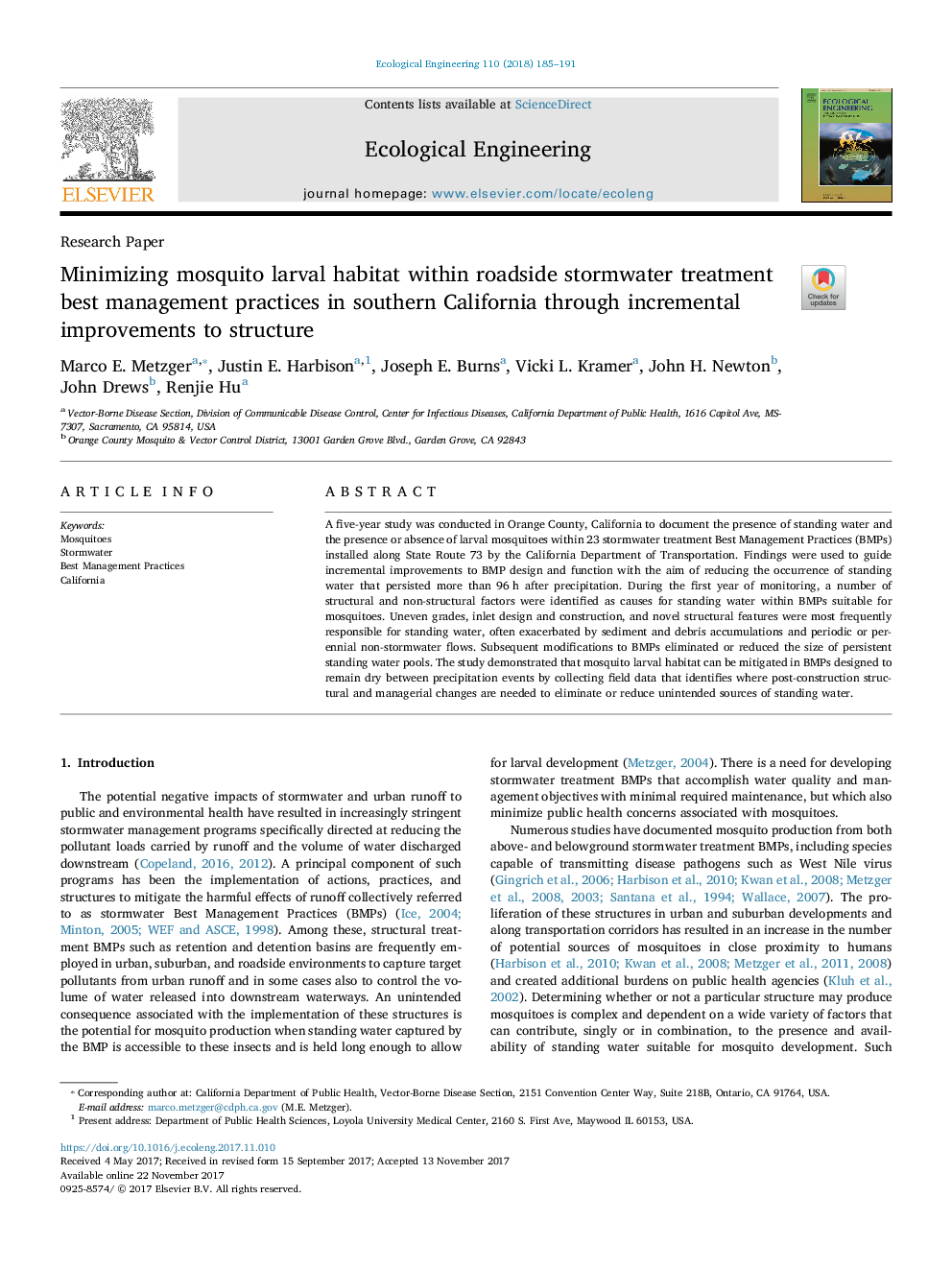ترجمه فارسی عنوان مقاله
به حداقل رساندن زیستگاه های لاروی پشه در بهترین شیوه های مدیریت در مدیریت تصفیه فاضلاب کنار جاده ای در جنوب کالیفرنیا از طریق بهبود مستمر ساختار
عنوان انگلیسی
Minimizing mosquito larval habitat within roadside stormwater treatment best management practices in southern California through incremental improvements to structure
| کد مقاله | سال انتشار | تعداد صفحات مقاله انگلیسی |
|---|---|---|
| 108241 | 2018 | 7 صفحه PDF |
منبع

Publisher : Elsevier - Science Direct (الزویر - ساینس دایرکت)
Journal : Ecological Engineering, Volume 110, January 2018, Pages 185-191
ترجمه کلمات کلیدی
پشه ها طوفان آب بهترین روش های مدیریت، کالیفرنیا،
کلمات کلیدی انگلیسی
Mosquitoes; Stormwater; Best Management Practices; California;

